Expanded Owens Valley Solar Array
Observing Status
Array status and latest spectrograms/images.
Direct MeEOVSA Data
Browsing and using EOVSA data products.
Direct MeEOVSA Flare List
Query the EOVSA flare list and data products.
Direct MeEOVSA Publications
Publications that use OVSA data.
Direct MeInstrument Specifications
|
EOVSA Antennas
27-m Antenna for Calibration: The two existing 27-m antennas have be refurbished with new control systems and installation of a cryogenic system for He-cooled receiver operation (system temperature about 15 K). This upgrade has permited phase calibration in 90 s on sources as weak as 0.5 Jy. Currently, one of the two 27-m antennas is being used for calibration.
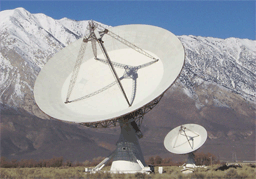
27-m antenna used for precision phase calibration.
2-m Antennas for Solar Observations: The work-horses of the array are the fifteen 2-m antennas. These precision antennas see the full disk of the Sun over the entire frequency range of 1-18 GHz, and track with high accuracy for stable operation. 6 new altitude-azimuth-mounted antennas have been installed to replace the 4 old equatorial-mounted antennas, and add two new antennas to EOVSA to create a 15-element array. All the antennas have equipped with unified control systems, allowing simplified operations.
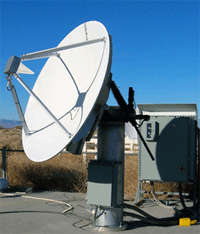
2-m antennas: the work-horses of the array.
Array Configuration
Three-Armed Spiral Configuration: The imaging properties of the instrument (image quality, resolution, snapshot vs. rotational synthesis properties) are entirely determined by the array configuration. The original plan was for a 3-armed spiral, but environmental concerns required a shift of the inner antennas. The inner antennas still follow a spiral, but the outer antennas follow a different spiral. The overall dimensions of the array are 1.08 km EW by 1.22 km NS, yielding a resolution (a sythesized beam width) of about 50"/n GHz. To put this in perspective, at the 17 GHz frequency of the Nobeyama Radioheliograph, the resolution is about 3" (5 times better than Nobeyama).
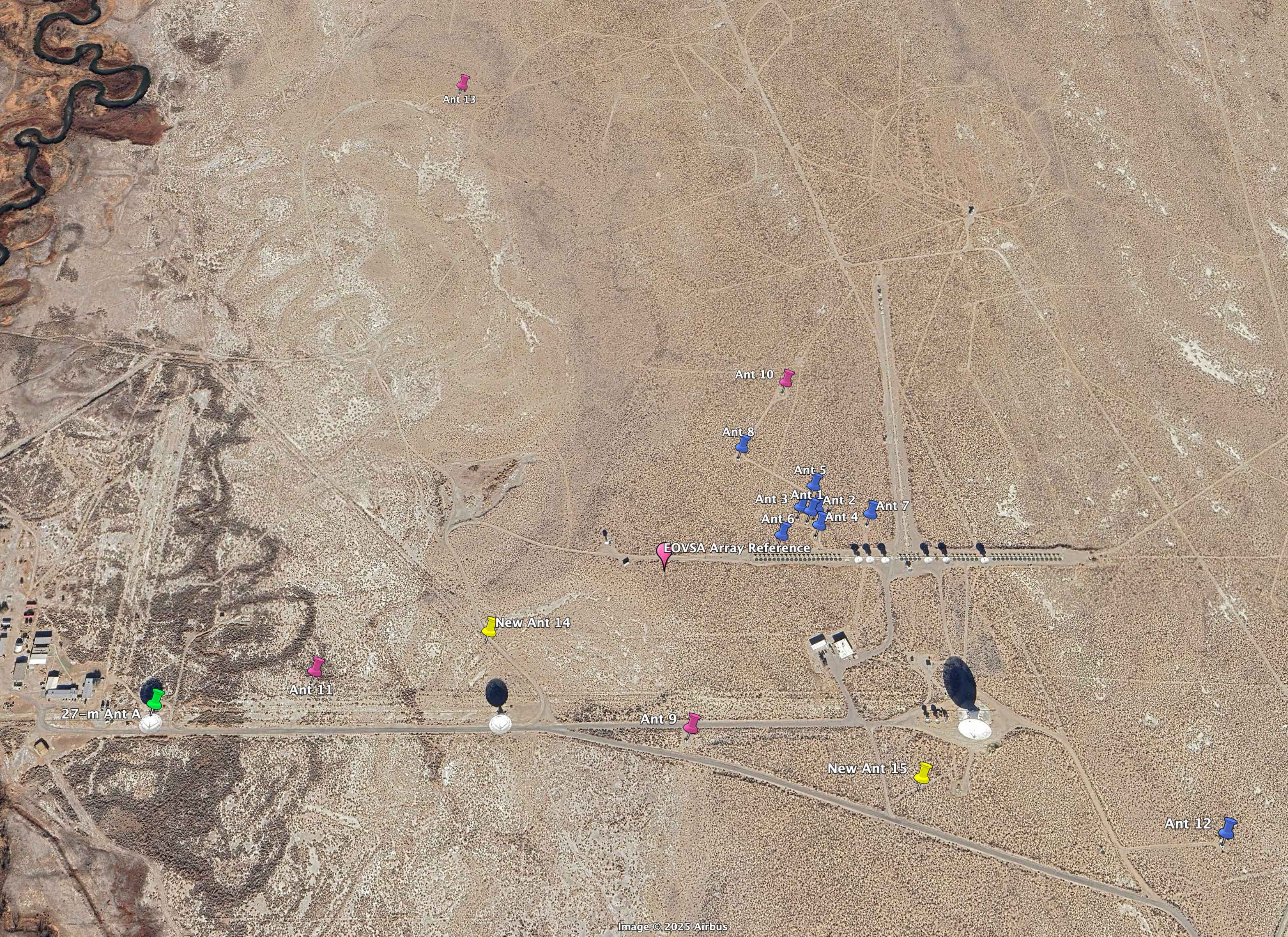
Layout of the 15 2-m antennas of the array. Pink pins are the 4 replacement antennas. Yellow pins are the two new antennas. Green pin shows the 27-m antenna.
UV Coverage and Point Spread Function: The array configuration yields a snapshot uv coverage optimized for sampling solar features with a wide range of angular sizes. With the addition of the 2 new antennas into the array, 27 baselines will be added (or 35% increase), resulting in a cleaner point spread function (PSF) for better imaging spectroscopy performance.
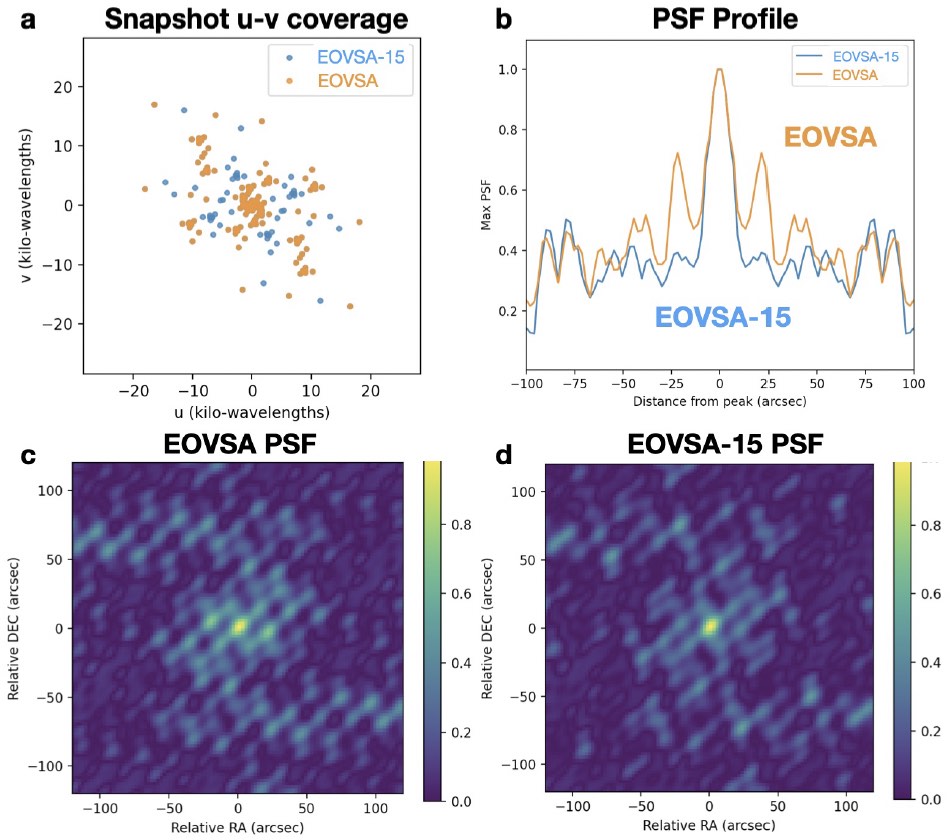
Snapshot u-v coverage (a) and PSF (b-d) of EOVSA-15 compared to EOVSA(-13) for improved imaging performance for 5.0 GHz.
Frequency Range, Bandwidth and Resolution
Frequency Range: The overall frequency range is 1-18 GHz, which is well suited to observe solar radio emission from the low solar atmosphere, particularly for active regions and the microwave component of solar flares. The nearly 20:1 bandwidth is enable by the use of ultra-wideband feeds. We are now replacing the feeds with new-generation quad-ridge flared horn feeds designed by J. Flygare of Caltech.
Bandwidth: The instantaneous bandwidth of the system is 325 MHz, which allows the 1-18 GHz range to be sampled in 50 "tunings." These 325 MHz channels can be selected in any order (frequency agile) and data sampled on a 20 ms cadence. For the standard observing mode, we sweep the 325 MHz band across the entire 1-18 GHz range in 1 s. For the bursty observing mode, we "sit-and-stare" at a selected band, providing an ultra-high 20-ms time resolution for spectral imaging.
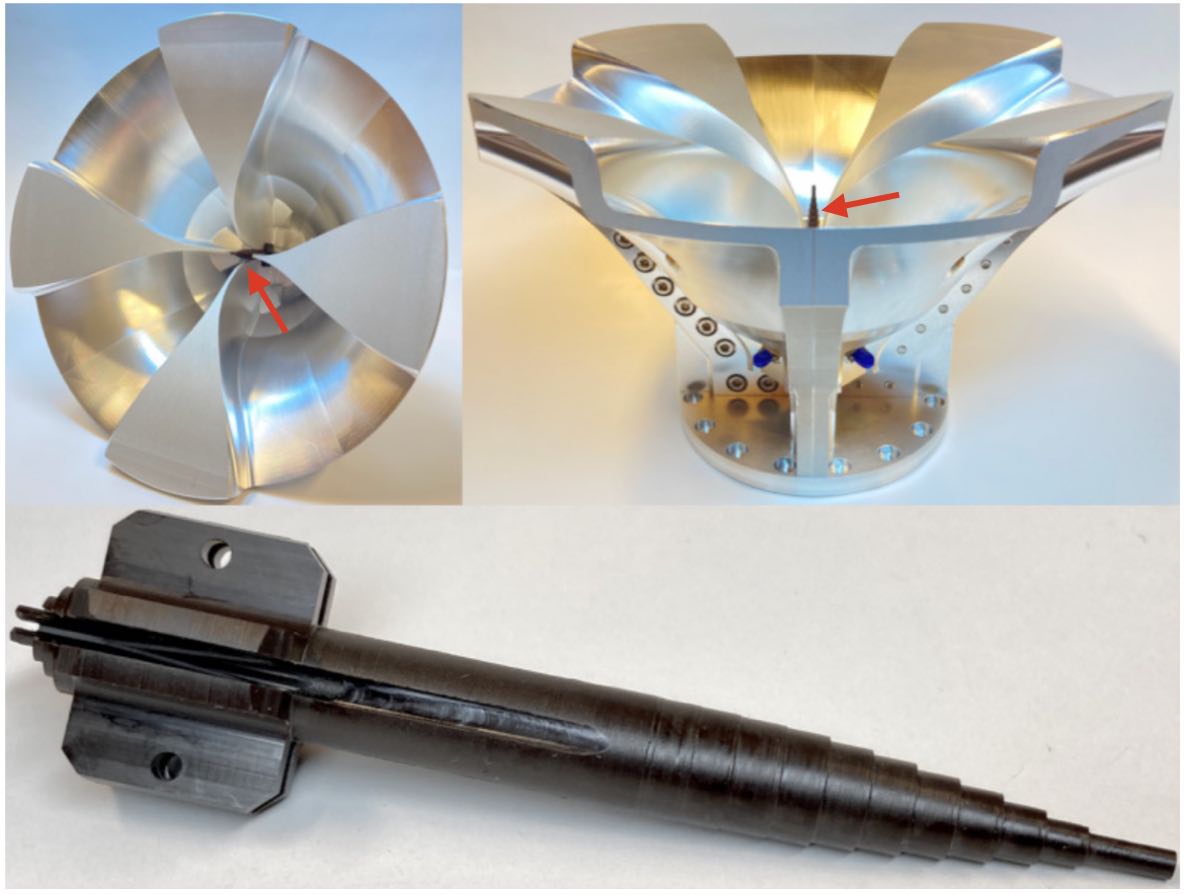
New-generation quad-ridge flared horn feeds that will be installed to the EOVSA antennas.
Instrumental Frequency Resolution: The instrumental resolution is 122 kHz, which is necessary for optimal excision of radio frequency interference (see technology page). However, this is much finer resolution than required for the science drivers, and would yield far too much data. Instead, these fine frequency channels will be combined in a frequency-dependent way to provide 1 MHz resolution at the lowest frequencies near 1 GHz and increase to about 50 MHz resolution near 18 GHz.
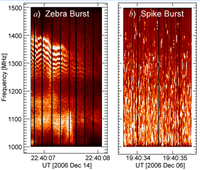
Example solar bursts observed with the FASR Subsystem Testbed at 20 ms time resolution and 1 MHz frequency resolution. This matches the highest time resolutions of EOVSA, which will provide imaging on this time and frequency resolution with its bursty imaging mode.
Time and Frequency Resolution for Standard Flare Continuum Imaging: Owing to their rapid time evolution, solar flares must be imaged using "snapshot" mode, because there is no time to employ the technique of Earth-rotation synthesis to improve imaging. We can, however, for continuum emission such as microwave gyrosynchrotron radiation, we can use the technique of multi-frequency-synthesis imaging at the expense of frequency resolution to improve image quality. The standard imaging mode has an effective time resolution of 1 s (with the 325 MHz IF band sweeping across the entire 1-18 GHz frequency range in 20 ms * 50 steps), which is sufficient for most science use cases for observing incoherent gyrosynchrontron radiation from solar flares.
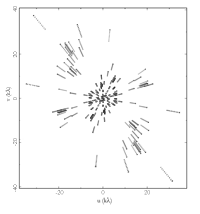
Snapshot UV coverage and PSF for imaging continuum gyrosynchrotron radiation from flares, utilizing 1-s time resolution and band-integrated (325-MHz) multi-frequency synthesis.
Time and Frequency Resolution for Bursty "Spectral-Line" Imaging: For coherent radio bursts with fine frequency structures, we need to use the spectral-line snapshot mode to capture their most detailed time and frequency variations. In this case, we can use the "sit-and-stare" mode with the 325-MHz IF band fixed at a selected band "slot" to achieve imaging at 20 ms time resolution with less than 1 MHz frequency resolution. To resolve fine spectral features, we need to use narrow channels for imaging.

Snapshot UV coverage and PSF for imaging coherent radio bursts, utilizing 20 ms time resolution and 1 MHz spectral bandwidth.
Time and Frequency Resolution for Active Region Imaging: For more slowly varying sources such as active regions of the quiet solar disk, Earth-rotation synthesis and frequency synthesis can both be employed. Typically, active regions can be imaged well at half-hour resolution, while weaker quiet Sun sources (plage regions, prominences and filaments) can be imaged on a 4 hour timescale.
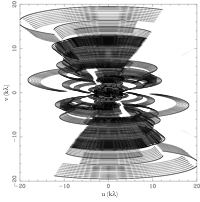
Earth-rotation synthesis UV coverage and PSF for imaging active regions and other features, utilizing 20% frequency synthesis and half-hour time integration.